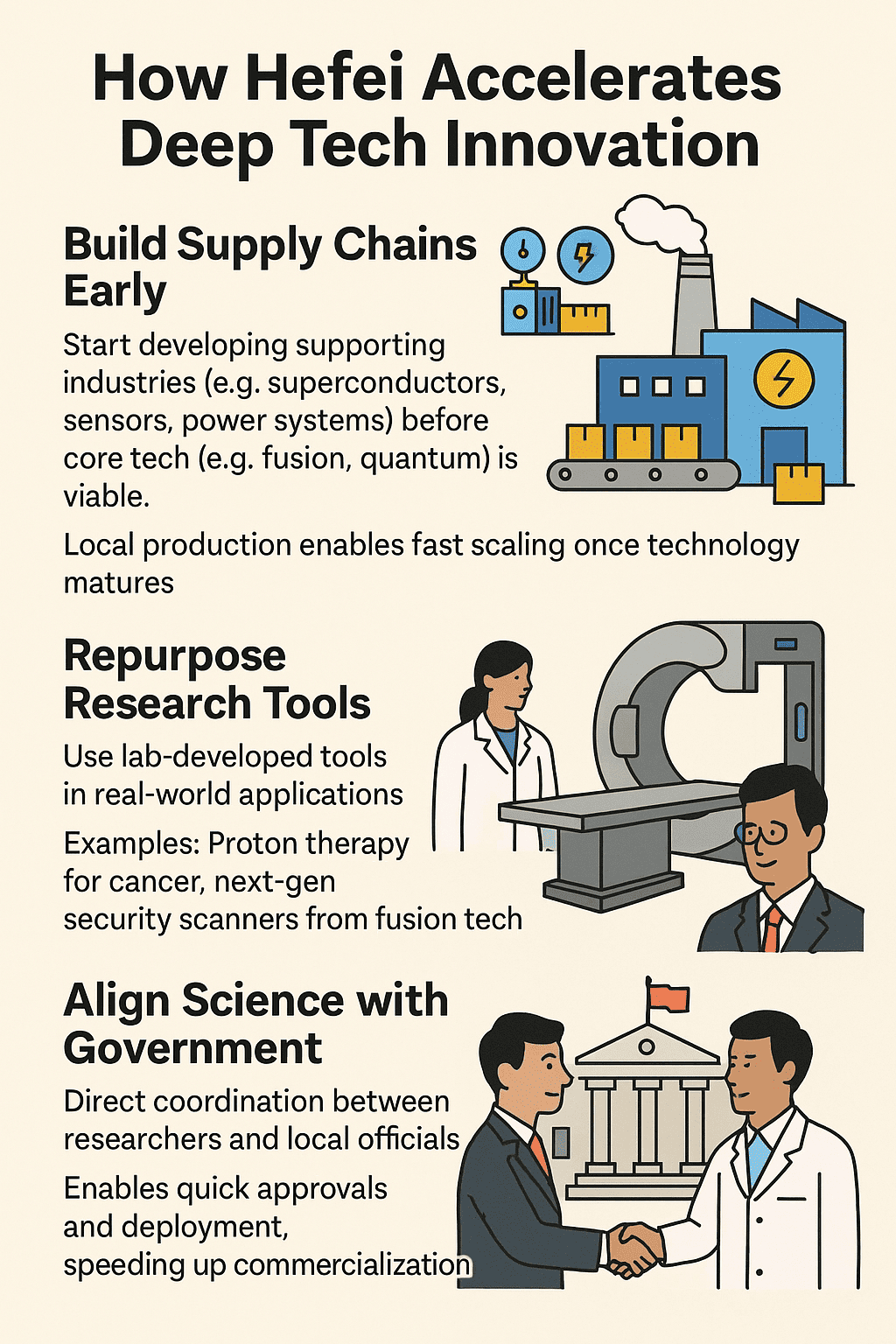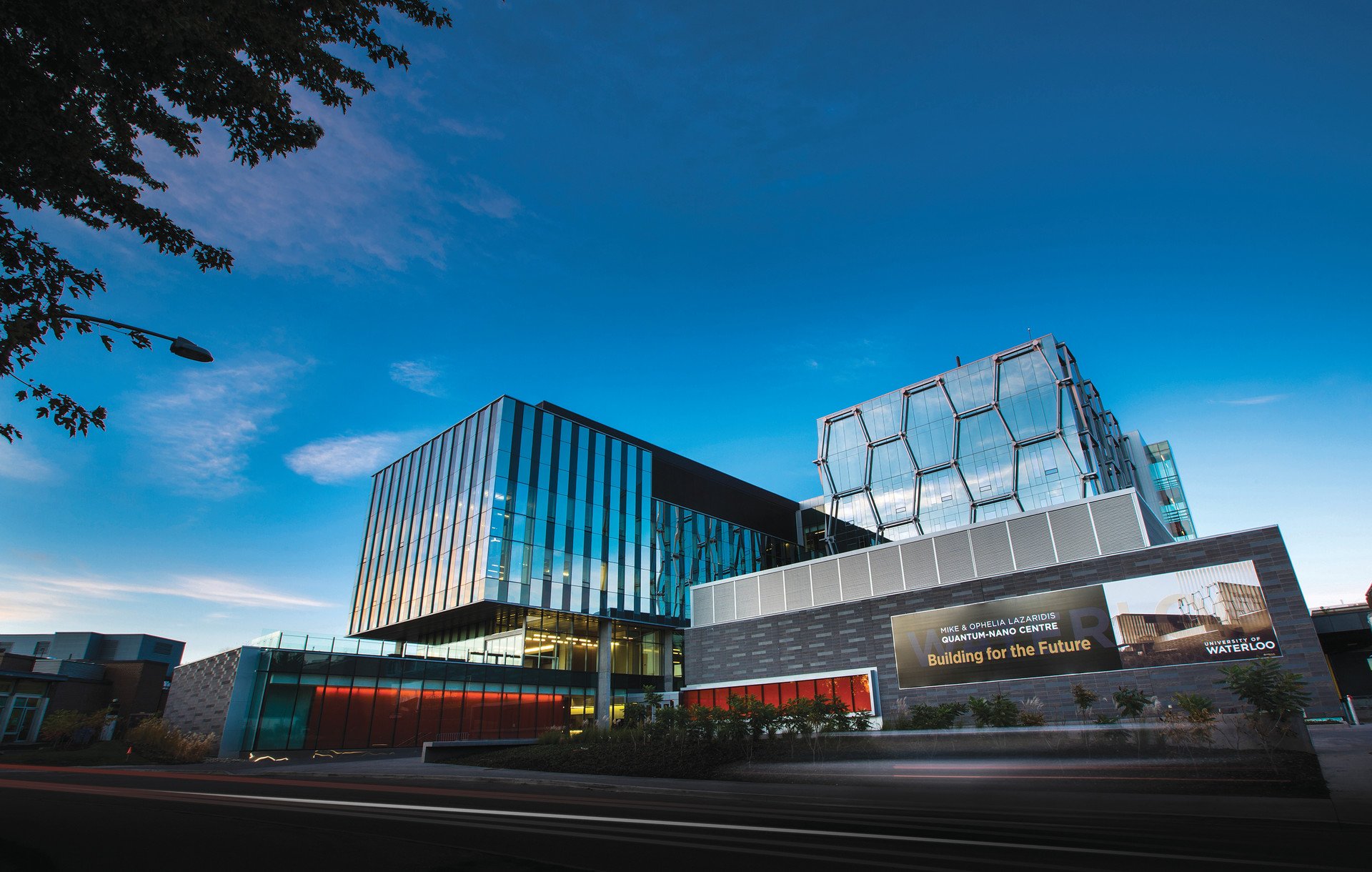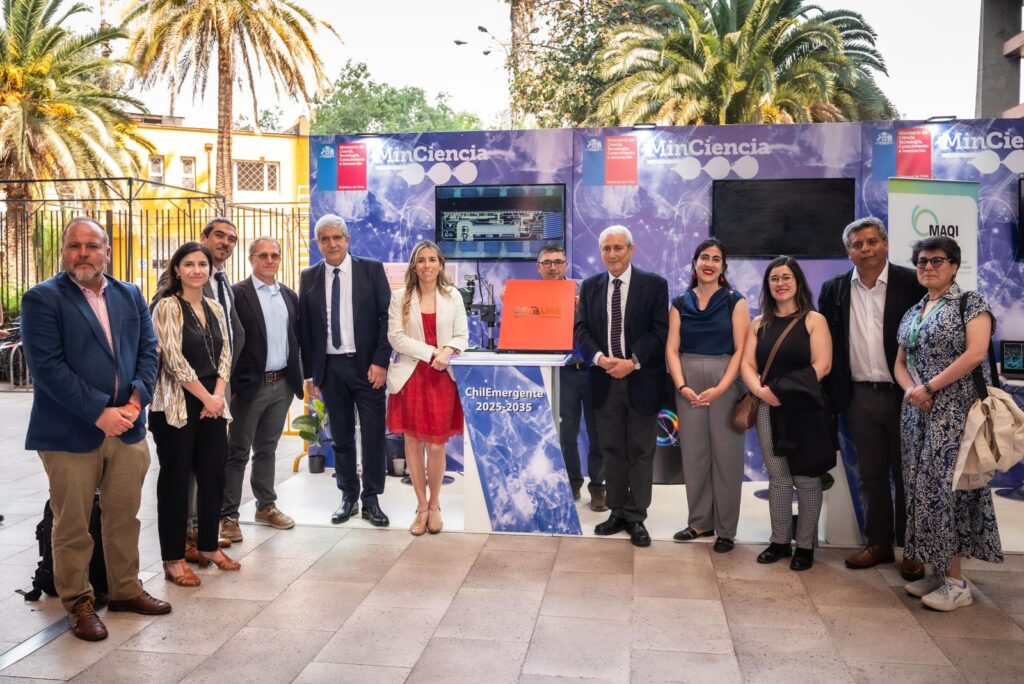Insider Brief
- Hefei has emerged as a national model for turning frontier science into commercial industries by aligning research, policy and supply chain development.
- Quantum companies such as China Telecom Quantum Group and deep tech clusters like “Quantum Avenue” have grown out of basic research at USTC, supported by municipal coordination.
- The city’s strategy includes early supply chain building, real-world repurposing of research tools, and fast-track commercialization through close collaboration with local government.
- Image: Dagvidur, Wikimedia Commons
China is turning scientific labs into launchpads for new industries, and Hefei, the capital of Anhui Province in China, offers a blueprint for how deep tech ecosystems can be built for immediate commercial impact.
From nuclear fusion to quantum communication, this mid-sized inland city has become a model for how to rapidly convert frontier research into commercial ecosystems. According to a recent article by Xinhua and the Chinese Academy of Sciences, Hefei’s model fuses government coordination, basic science, industrial policy and commercial urgency to fast-track business formation in future-facing sectors.
Quantum Goes Commercial
Much of China’s quantum research originates from the University of Science and Technology of China (USTC), located in Hefei. Building on that research, local officials have fostered a dense cluster of quantum-focused businesses along a stretch known as “Quantum Avenue.”

China’s quantum laboratories are starting to find ways to become quantum companies, often finding commercial uses for the new technologies that the country’s scientists are churning out.
Among the most prominent is China Telecom Quantum Group, which offers quantum-encrypted phone calls and messaging services. Chairman Lyu Pin told Xinhua the company already has 6 million users, including many businesspeople worried about commercial spying.
“You can simply apply for a SIM card with quantum services to protect your phone from eavesdropping,” Lyu said.
Quantum communication leverages the physics of quantum mechanics to detect tampering. Any interception of the signal collapses the data, alerting the user. With growing public awareness of digital privacy, Lyu said the user base is expected to reach tens of millions.
Laying Eggs Along the Way
While quantum lights up China’s path to tech commercialization, at the heart of the city’s deep tech economy lies a fusion energy operation known for its “artificial sun” — the Experimental Advanced Superconducting Tokamak (EAST). This research facility recently set a world record by sustaining high-confinement plasma for 1,066 seconds, a key step in the race to develop commercial fusion power. Nearby, engineers are building the follow-up machine — BEST — which aims to demonstrate electricity generation from fusion.

But fusion is only half the story. Alongside the machines, a new industry has taken shape, made up of more than 60 local companies that supply everything from superconductors to power systems.
As Fusion Energy Tech. executive Yang Qingxi told Xinhua, “We aim to ‘lay eggs along the way,’ fostering new high-tech companies along our journey toward eventually realizing fusion power.”
In the west, laying eggs means making mistakes. But here, the executive is using the metaphor to describe generating valuable outcomes or spin-offs as you progress toward a larger goal. This strategy of spinning off businesses from experimental science before the final goal is reached defines the Hefei model.
From Lab to Metro Station
In some cases, fusion-related technologies have already left the lab. One example is a new type of security scanner derived from plasma physics that is now deployed in Hefei’s metro system, according to the article. Another is a proton therapy device for cancer treatment, moving into clinical trials soon.
By supporting local manufacturers in building out the supply chain early, the city is positioning its companies to dominate the field if — or when — fusion becomes viable.
“We used to rely on imported superconductors,” said Yan Jianwen, chairman of Fusion Energy Tech. “Now domestic companies have managed to greatly raise the output. For them, it will become a gigantic industry if fusion energy is realized.”
What Makes the Hefei Model Work
Researchers and company officials credit their success to tight collaboration and an unusually responsive local government. Zhang Jianxiao, who leads sci-tech innovation at China Telecom Quantum Group, emphasized the importance of speed.
“It usually takes decades and a lot of luck for basic science like quantum technology to enter the market, so it is very important to generate rewards through timely marketization, and for the government to facilitate this process,” said Zhang.
The city government, in turn, has created structures to enable that speed. According to Li Chen of the Hefei Development and Reform Commission, the city has established a dedicated office to help turn lab discoveries into industries.
That approach echoes a broader national policy. China’s central government has called for establishing investment mechanisms around future industries — including quantum technology, biomanufacturing, AI, and 6G — to “stimulate a swift market response,” according to the Xinhua article. This emphasis is designed to reduce the gap between basic science and industrial application, long a weakness in China’s innovation pipeline.
Lessons From Hefei
As regions across the globe gear up to build quantum and deep tech ecosystems, Hefei’s success offers some important lessons.
Hefei’s experience shows that frontier research doesn’t have to exist in isolation from industry. Instead, with the right infrastructure and policy alignment, it can serve as the foundation for entirely new economic sectors. The city’s model offers a roadmap for other regions seeking to commercialize scientific discovery more effectively.
One key lesson is the importance of building supply chains early. Even before a core technology—such as fusion power or quantum computing — is commercially viable, supporting the companies that make essential components can help lay the groundwork for a broader industry. In Hefei, local firms now produce superconductors, sensors, and power systems that were once imported, making them ready to scale when the underlying technologies mature.
Another strategy is to find practical uses for tools and methods developed in the lab, even if the original scientific goal remains out of reach. This approach has already yielded spin-off technologies like proton therapy systems for cancer treatment and next-generation security scanners adapted from fusion research.
Equally important is pairing research institutions with responsive local governments. In Hefei, researchers have a direct line to municipal officials who can green-light experimental deployments and coordinate commercialization efforts. This reduces the lag time between discovery and deployment—an advantage in fields where traditional commercialization paths can take decades.
Note also the tight coordination of the stakeholders — national and local governments, entrepreneurs and basic research all have defined roles. By aligning research, policy, and market incentives, Hefei has turned the long arc of basic science into a platform for near-term innovation.
















